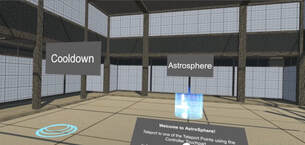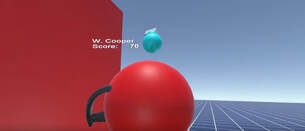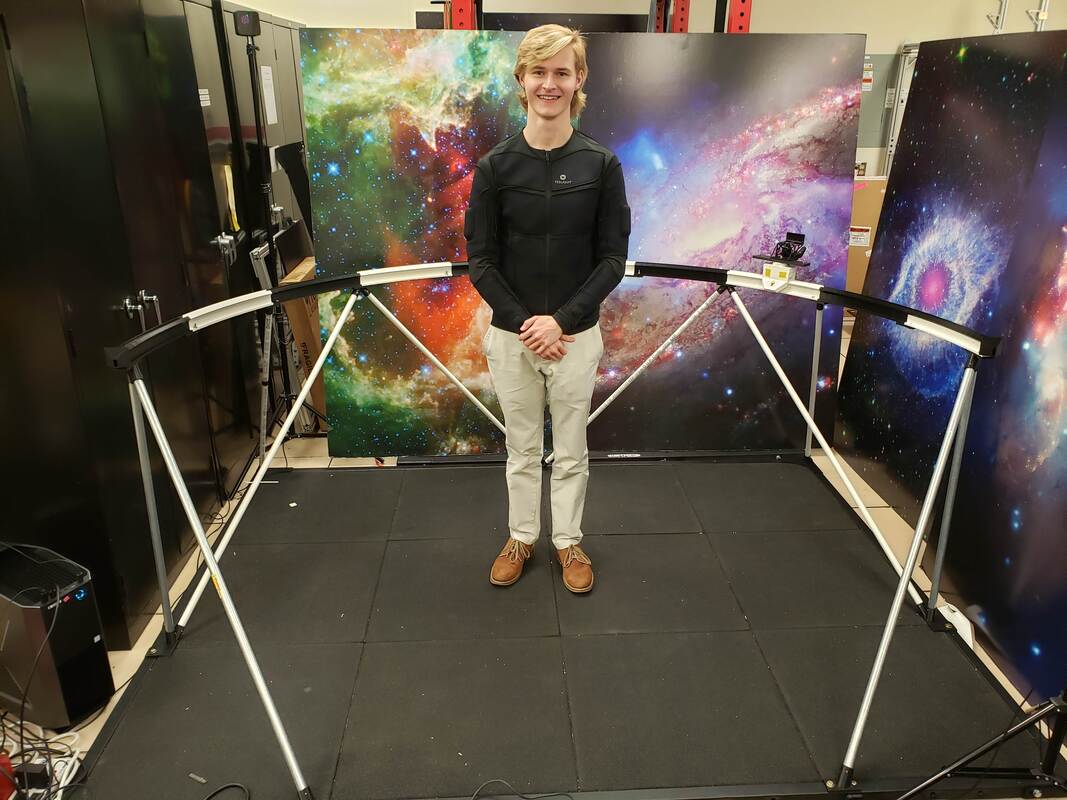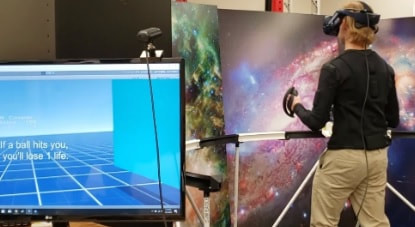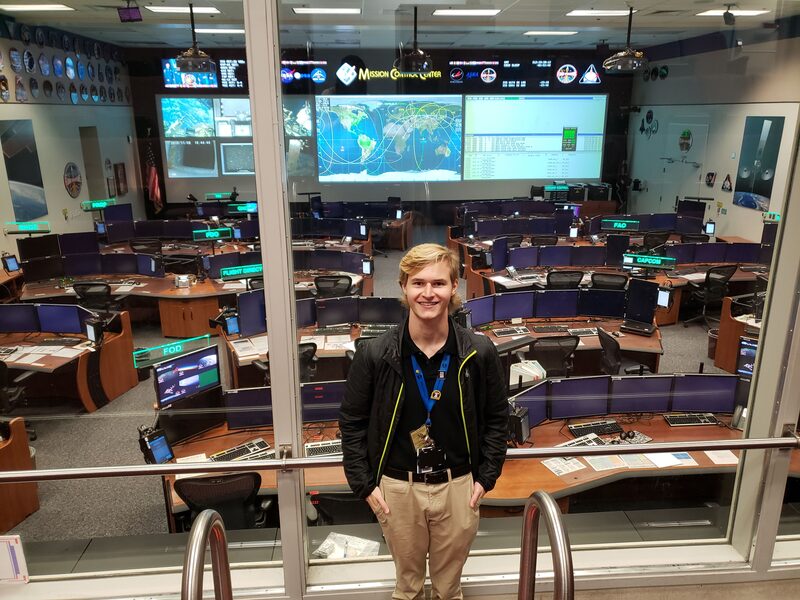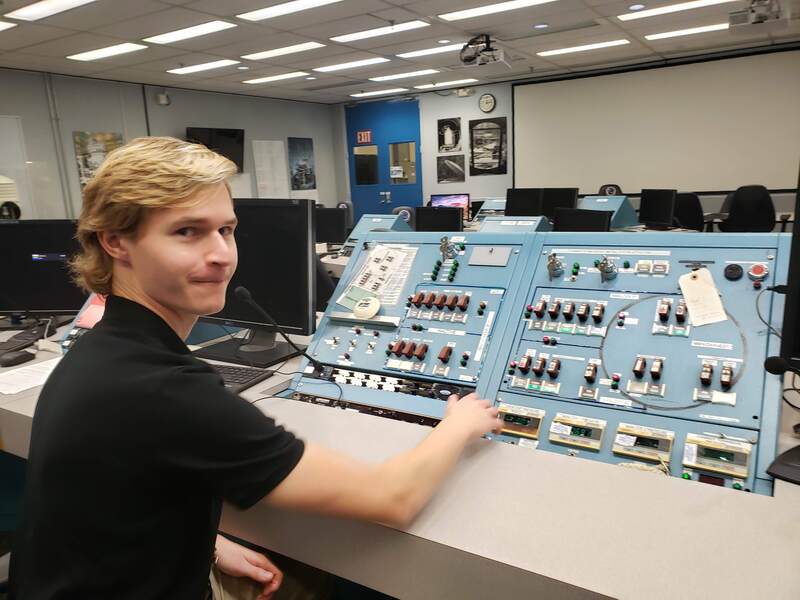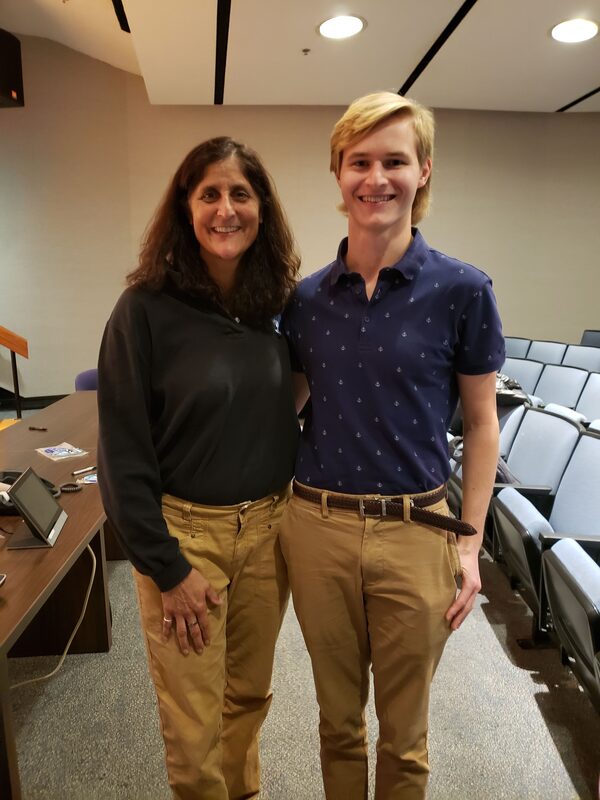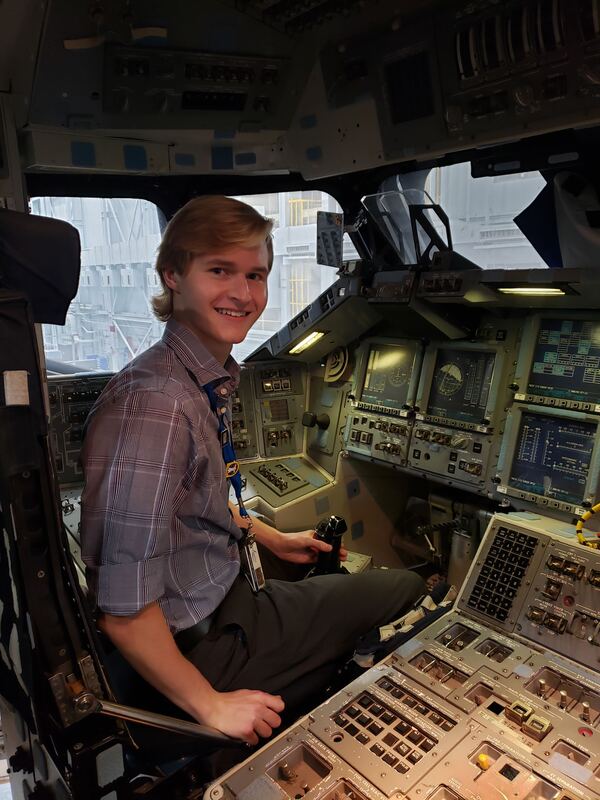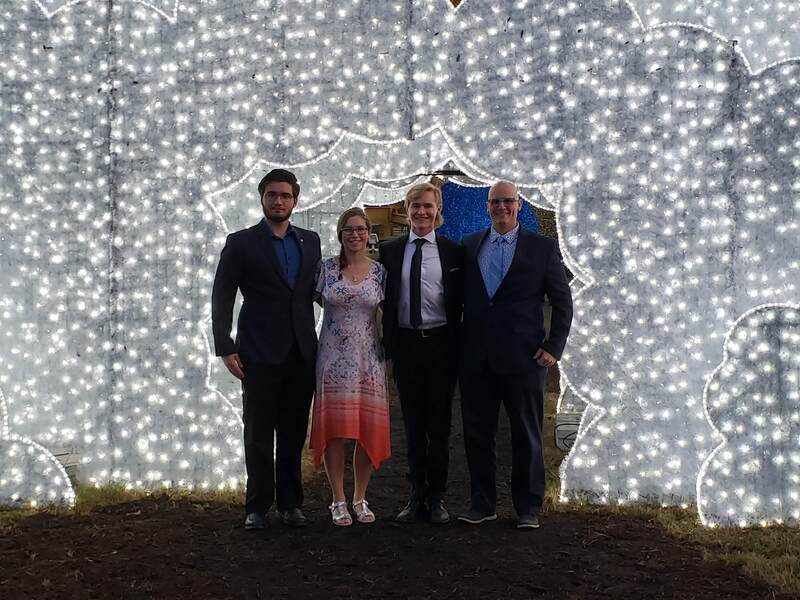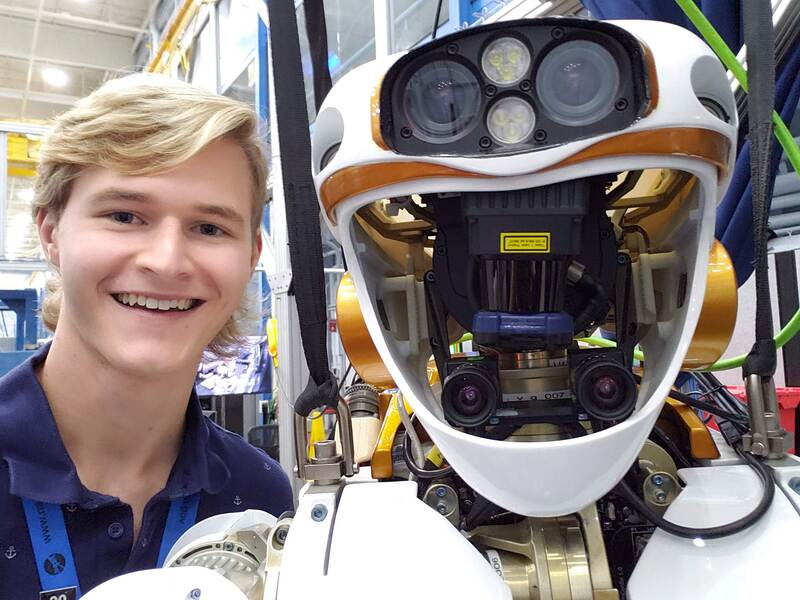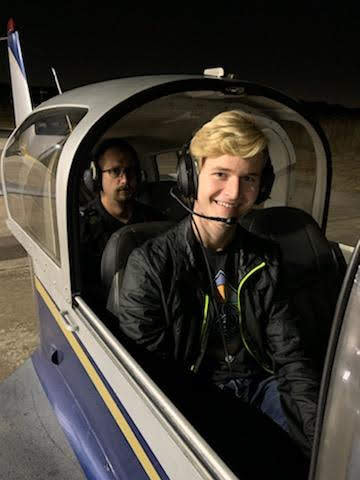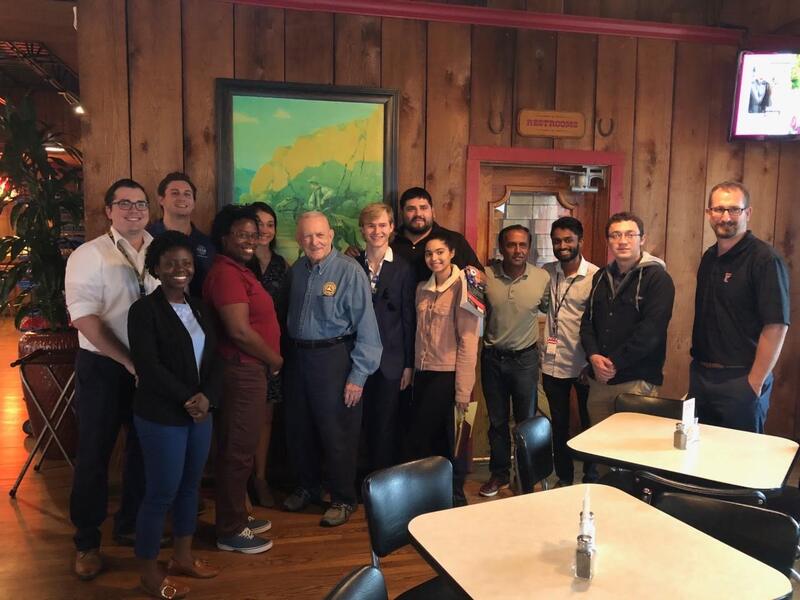My Work
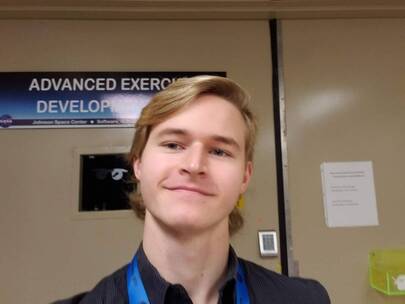
NASA has begun using virtual reality to represent landing sites, to simulate complex procedures, and to condition astronauts for space travel. Virtual reality (VR) is a computer rendering of a three-dimensional graphic with which one can interact in a seemingly physical manner. Despite being computer-generated, VR dominates one’s visual receptors and often one’s auditory receptors, leading to a sense of immersion in the digital world. VR has countless real-world applications because any scenario, real or imaginary, can be simulated.
While working in the Advanced Exercise Development Lab at Johnson Space Center, I developed software in support of crew exercise systems on the International Space Station and future exploration missions. I created virtual exercise training software to provide real-time guidance on resistance exercise technique, and I built virtual exercise environments to improve astronaut performance and enjoyment during workouts. My biggest projects were designing and developing Astrosphere and OPTOS.
While working in the Advanced Exercise Development Lab at Johnson Space Center, I developed software in support of crew exercise systems on the International Space Station and future exploration missions. I created virtual exercise training software to provide real-time guidance on resistance exercise technique, and I built virtual exercise environments to improve astronaut performance and enjoyment during workouts. My biggest projects were designing and developing Astrosphere and OPTOS.
Astrosphere
|
Astrosphere is a gamified VR training environment aimed at improving the player’s adaptability, multi-tasking, reaction time, and concentration. Initially, the player is dropped into a blank white surrounding. Suddenly, warning messages appear, and the game’s main menu, which is housed in a three-dimensional image of a dojo, flies in. This appearance of the dojo is coupled with a sensation of wind using the haptic sensors in the Teslasuit that the player is wearing. These elements help the player feel immersed in his or her virtual surroundings.
Inside the dojo, the player can choose to play the game, view their statistics, enter a virtual cooldown area, or exit the application. In the game, spheres will appear at a spawn point, which is determined by the location of a Vive Tracker in the physical world, and move towards the player. The player must grab the spheres by gripping the controllers and actively throwing the spheres into their corresponding goals. After completing the tutorial, the player will go through three levels. Level 1 tests the player’s ability to adapt, Level 2 tests the player’s multitasking abilities and reaction to pressure, and Level 3 tests the player’s reaction to an overwhelming situation. Additionally, after each level, the player will go through a “checkup”, which is a simple level aimed at helping the player reorient themselves. The checkups ensure that the biometric data gathered from each level is not affected by previous levels; for example, the player should be calmer going into the next level after completing a checkup. |
OPTOS
Open Platform for Telemetry of Optic Strategies
|
Working with the OPTOS team, I integrated Astrosphere with haptic and optic technology. The main objective of this project was to create a test bed upon which future lab members could further study the physiologic effects of virtual reality, gamified exercise, GUI/HUD interfaces, and haptic feedback.
Haptic sensors simulate the sensation of touch and/or motion. Haptic technology is woven into a garment called a Teslasuit, and I fused the Teslasuit’s code with Astrosphere via a websocket. Astrosphere will trigger the Teslasuit’s haptic sensors when a sphere collides with the player to provide tactile feedback. Additionally, I created a haptic asset that simulates wind when the Dojo flies toward the player. OPTOS utilizes two forms of optic technology: motion capture and eye tracking. A camera rig is positioned around the playspace to record the player’s movement. I then used a Vive Tracker to tether the camera’s relative position to the virtual game’s sphere spawner. By putting the tracker on the camera, the camera can more easily record the player’s movements; the tracker’s game object provides incentive for the player to face the camera. In addition, the player’s VR headset records his or her eye movement, which provides useful information. Eye tracking assets in Astrosphere answer questions such as, “Does the player spend time looking at the score or remaining lives, or is his or her focus solely on the task at hand?” This data is used to analyze the player’s cognitive decision-making process. The haptics, motion capture, and eye tracking systems are integrated into my entertaining virtual game set in my detailed digital world, which can gather useful data about the player’s biometrics and cognitive abilities. As the technology develops, more vivid scenes can be simulated, such as real-world gyms, homes, and even family members and friends. Eventually, this technology will be used on the ISS in conjunction with the T2 treadmill, cycle ergometer, and/or ARED to improve crew performance, engagement, and mental health. |
OPTOS In Action
Personal Growth
I cannot express how grateful I am that I had this opportunity. Everyone at NASA was so passionate about working there, and I was ecstatic that I could contribute to their mission. I met hundreds of wonderful people from all walks of life, and I forged lasting relationships with interns, managers, engineers, and astronauts. NASA taught me how companies can form communities because I truly felt at home when I was at NASA. Even on days I wasn't scheduled to work, I would drive up to the space center and just enjoy being on campus. I'd wander into buildings and introduce myself to anyone who had a minute, and no matter who I talked to, they treated me with the utmost respect. I would discuss their projects with them, and I would be in awe of their accomplishments. It felt like I was surrounded by celebrities, but they talked to me like any of my close friends. The people who work for NASA are some of the most caring, intelligent, sincere, and inspiring people I have ever met, and I am so thankful that I had the chance to meet them.
Working at NASA significantly improved my technical proficiency. Before stepping foot into Johnson Space Center, I had only ever heard of virtual reality. I had never really experimented with it before because the equipment is very expensive. However, having access to a Valve Index in my lab gave me the opportunity to explore everything VR had to offer. From the minute I saw the VR system, I knew I wanted to work with it. In the span of about two weeks, I taught myself three different coding languages (C, C++, and C#) as well as both Unity and UnReal Engine so that I could adequately use the equipment. Creating my first box in VR was an incredible feat for me, and as the semester progressed, I became more and more well-versed in game design and virtual reality development.
My work with virtual reality was so interesting to me because it gave me the chance to create my own world. Anything I could imagine, I could put in this virtual world, and the endless possibilities VR, and by extension computer science, offers inspired me to change my major. I enjoyed studying biomedical engineering, but computer science lets me express myself in a way that nothing else can. Ever since I was a kid, I would imagine fantastical scenarios and pretend I was going on adventures with my favorite characters; computer science lets me build actual worlds that my friends and I can explore. Computer science provides a vehicle for me to worldbuild in the most literal sense, which makes me feel like I'm part of an extraordinary story waiting to be told. Every story I have ever read, seen, or heard has helped shape me into who I am, and I want to use computer science to tell my story, in the hopes that it will help shape others into the best version of themselves.
Working at NASA significantly improved my technical proficiency. Before stepping foot into Johnson Space Center, I had only ever heard of virtual reality. I had never really experimented with it before because the equipment is very expensive. However, having access to a Valve Index in my lab gave me the opportunity to explore everything VR had to offer. From the minute I saw the VR system, I knew I wanted to work with it. In the span of about two weeks, I taught myself three different coding languages (C, C++, and C#) as well as both Unity and UnReal Engine so that I could adequately use the equipment. Creating my first box in VR was an incredible feat for me, and as the semester progressed, I became more and more well-versed in game design and virtual reality development.
My work with virtual reality was so interesting to me because it gave me the chance to create my own world. Anything I could imagine, I could put in this virtual world, and the endless possibilities VR, and by extension computer science, offers inspired me to change my major. I enjoyed studying biomedical engineering, but computer science lets me express myself in a way that nothing else can. Ever since I was a kid, I would imagine fantastical scenarios and pretend I was going on adventures with my favorite characters; computer science lets me build actual worlds that my friends and I can explore. Computer science provides a vehicle for me to worldbuild in the most literal sense, which makes me feel like I'm part of an extraordinary story waiting to be told. Every story I have ever read, seen, or heard has helped shape me into who I am, and I want to use computer science to tell my story, in the hopes that it will help shape others into the best version of themselves.
